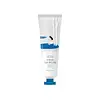What's inside
What's inside
 Key Ingredients
Key Ingredients

No key ingredients
 Benefits
Benefits

 Concerns
Concerns

 Ingredients Side-by-side
Ingredients Side-by-side

Water
Skin ConditioningGlycerin
HumectantCaprylic/Capric Triglyceride
MaskingButyrospermum Parkii Butter
Skin ConditioningCetearyl Alcohol
EmollientCetearyl Olivate
Isononyl Isononanoate
EmollientSqualane
EmollientSorbitan Olivate
EmulsifyingDipropylene Glycol
HumectantAcrylates/C10-30 Alkyl Acrylate Crosspolymer
Emulsion StabilisingParfum
MaskingTromethamine
BufferingHydroxyethyl Acrylate/Sodium Acryloyldimethyl Taurate Copolymer
Emulsion StabilisingHydroxyacetophenone
AntioxidantCaprylyl Glycol
EmollientBetula Platyphylla Japonica Juice
Skin ConditioningEthylhexylglycerin
Skin ConditioningAdenosine
Skin ConditioningSorbitan Isostearate
EmulsifyingDisodium EDTA
Dipotassium Glycyrrhizate
HumectantButylene Glycol
HumectantGlyceryl Glucoside
HumectantHydrogenated Lecithin
EmulsifyingGlyceryl Caprylate
EmollientStearic Acid
Cleansing1,2-Hexanediol
Skin ConditioningTocopherol
AntioxidantSodium Hyaluronate
HumectantHydrolyzed Keratin
HumectantCeramide NP
Skin ConditioningCeramide Ns
Skin ConditioningCholesterol
EmollientHydrolyzed Hyaluronic Acid
HumectantPhytosphingosine
Skin ConditioningHyaluronic Acid
HumectantCeramide AP
Skin ConditioningCeramide As
Skin ConditioningAscorbic Acid
AntioxidantSodium Acetylated Hyaluronate
HumectantCeramide EOP
Skin ConditioningWater, Glycerin, Caprylic/Capric Triglyceride, Butyrospermum Parkii Butter, Cetearyl Alcohol, Cetearyl Olivate, Isononyl Isononanoate, Squalane, Sorbitan Olivate, Dipropylene Glycol, Acrylates/C10-30 Alkyl Acrylate Crosspolymer, Parfum, Tromethamine, Hydroxyethyl Acrylate/Sodium Acryloyldimethyl Taurate Copolymer, Hydroxyacetophenone, Caprylyl Glycol, Betula Platyphylla Japonica Juice, Ethylhexylglycerin, Adenosine, Sorbitan Isostearate, Disodium EDTA, Dipotassium Glycyrrhizate, Butylene Glycol, Glyceryl Glucoside, Hydrogenated Lecithin, Glyceryl Caprylate, Stearic Acid, 1,2-Hexanediol, Tocopherol, Sodium Hyaluronate, Hydrolyzed Keratin, Ceramide NP, Ceramide Ns, Cholesterol, Hydrolyzed Hyaluronic Acid, Phytosphingosine, Hyaluronic Acid, Ceramide AP, Ceramide As, Ascorbic Acid, Sodium Acetylated Hyaluronate, Ceramide EOP
 Reviews
Reviews

Ingredients Explained
These ingredients are found in both products.
Ingredients higher up in an ingredient list are typically present in a larger amount.
1,2-Hexanediol is a synthetic liquid and another multi-functional powerhouse.
It is a:
- Humectant, drawing moisture into the skin
- Emollient, helping to soften skin
- Solvent, dispersing and stabilizing formulas
- Preservative booster, enhancing the antimicrobial activity of other preservatives
Butylene Glycol (or BG) is used within cosmetic products for a few different reasons:
Overall, Butylene Glycol is a safe and well-rounded ingredient that works well with other ingredients.
Though this ingredient works well with most skin types, some people with sensitive skin may experience a reaction such as allergic rashes, closed comedones, or itchiness.
Learn more about Butylene GlycolThis ingredient is also known as shea butter. It is an effective skin hydrator and emollient.
Emollients help soothe and soften your skin. It does this by creating a protective film on your skin. This barrier helps trap moisture and keeps your skin hydrated. Emollients may be effective at treating dry or itchy skin.
Shea butter is rich in antioxidants. Antioxidants help fight free-radicals, or molecules that may harm the body. It is also full of fatty acids including stearic acid and linoleic acid. These acids help replenish the skin and keep skin moisturized.
While Shea Butter has an SPF rating of about 3-4, it is not a sunscreen replacement.
Shea butter may not be fungal acne safe. We recommend speaking with a professional if you have any concerns.
Learn more about Butyrospermum Parkii ButterCetearyl alcohol is a mixture of two fatty alcohols: cetyl alcohol and stearyl alcohol. It is mainly used as an emulsifier. Emulsifiers help prevent the separation of oils and products. Due to its composition, it can also be used to thicken a product or help create foam.
Cetearyl alcohol is an emollient. Emollients help soothe and hydrate the skin by trapping moisture.
Studies show Cetearyl alcohol is non-toxic and non-irritating. The FDA allows products labeled "alcohol-free" to have fatty alcohols.
This ingredient is usually derived from plant oils such as palm, vegetable, or coconut oils. There is debate on whether this ingredient will cause acne.
Due to the fatty acid base, this ingredient may not be Malassezia folliculitis safe.
Learn more about Cetearyl AlcoholGlycerin is already naturally found in your skin. It helps moisturize and protect your skin.
A study from 2016 found glycerin to be more effective as a humectant than AHAs and hyaluronic acid.
As a humectant, it helps the skin stay hydrated by pulling moisture to your skin. The low molecular weight of glycerin allows it to pull moisture into the deeper layers of your skin.
Hydrated skin improves your skin barrier; Your skin barrier helps protect against irritants and bacteria.
Glycerin has also been found to have antimicrobial and antiviral properties. Due to these properties, glycerin is often used in wound and burn treatments.
In cosmetics, glycerin is usually derived from plants such as soybean or palm. However, it can also be sourced from animals, such as tallow or animal fat.
This ingredient is organic, colorless, odorless, and non-toxic.
Glycerin is the name for this ingredient in American English. British English uses Glycerol/Glycerine.
Learn more about GlycerinWater. It's the most common cosmetic ingredient of all. You'll usually see it at the top of ingredient lists, meaning that it makes up the largest part of the product.
So why is it so popular? Water most often acts as a solvent - this means that it helps dissolve other ingredients into the formulation.
You'll also recognize water as that liquid we all need to stay alive. If you see this, drink a glass of water. Stay hydrated!
Learn more about Water